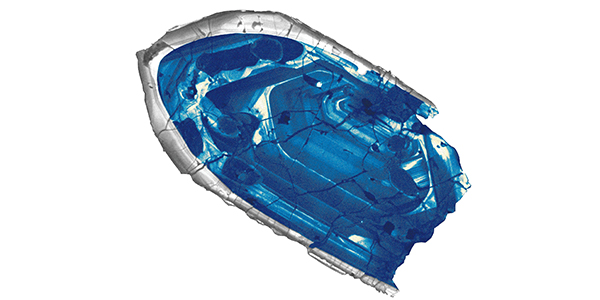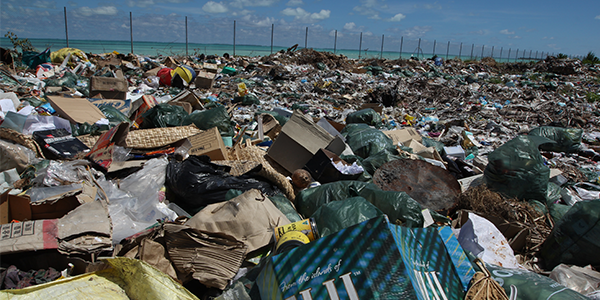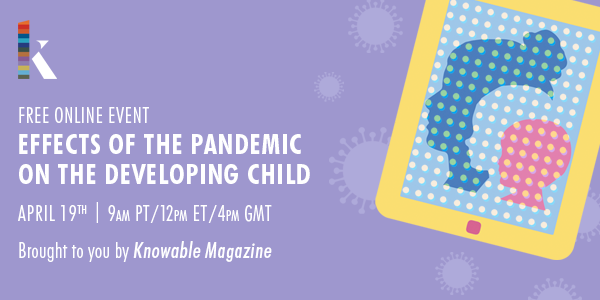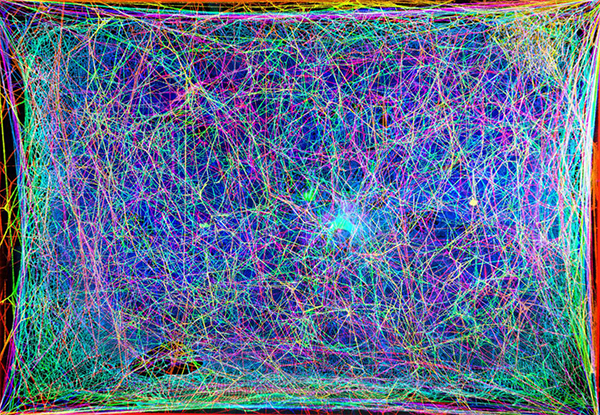Stay in the Know
Sign up for the Knowable Magazine newsletter today

Primordial black holes could explain dark matter, galaxy growth and more
By Adam Mann A half-century-old, still-disputed idea about dense cosmic objects from the dawn of time could solve longstanding mysteries about the universe. Read more.

Keeping time with zircons
By Cypress Hansen Crystals of the mineral zircon are rugged enough to survive the most violent geologic events. Impurities within them provide a time capsule of planetary history. Read more.

Four ways HIV activists have saved lives during Covid
By Monica Gandhi OPINION: We owe these early fighters a debt of gratitude for transforming our response to public health crises. Read more.
From the Knowable archives

The pileup of plastic debris is more than ugly ocean litter
By Kenneth R. Weiss Researchers are sending GPS devices down the Mississippi River in plastic bottles to track the flow of trash, Lea Skene reports in Baton Rouge’s the Advocate. Read more on efforts to stem the global tide of plastic pollution in our interview with environmental engineer Jenna Jambeck. Read more.
Don’t miss tomorrow’s event!

Effects of the pandemic on the developing child
Monday, April 19 | 9am PT | 12pm ET | 4pm GMT
Over the past year, children have dealt with social distancing, Zoom school and family stress. The lucky ones suffered mainly boredom and loneliness; others faced illness, poverty and hunger; loss of education; even unsafe conditions and abuse. How will the year of Covid-19 affect children’s growth, development and futures? There’s reason for hope: Research on past disasters suggests that kids are remarkably resilient.
Join Knowable Magazine for a live conversation with two leading child development experts on what families have been going through and visions for what’s ahead — and get your questions answered.
Upcoming events
Keys to successful aging — May 6 (Registration now open!). Speakers: Daniel Levitin (McGill University & Minerva Schools), Saul Villeda (UCSF) and Susan Charles (UC Irvine)
Monitoring our health with smartwatches — May 26. Speakers: Jessilyn Dunn (Duke University) and Mitesh Patel (University of Pennsylvania)
What we're reading
Rallying for radium Long before crowdfunding was a word, there was Marie Curie, a nugget of radium and a magazine editor named Marie Meloney. Years after Curie won her second Nobel prize, she couldn’t afford a gram of the element she codiscovered, which cost today’s equivalent of $1.3 million. On the Disappearing Spoon podcast, Sam Kean recounts how in 1920 Meloney raised the money in small donations from women around the US — enough to buy a fresh gram of radium for Curie’s research and to establish a trust fund for the scientist and her daughters, one of whom would go on to earn a Nobel Prize of her own. (There’s a transcript if you can’t listen.)
Catch of the day This is no whopper: Microfishing, the sport of catching very small fish, is on the rise. The hook is the diversity — there are oodles more little species than there are of larger fish. Some scientists think that microfishing could be a route to gather citizen science data on the underappreciated guppies, blennies and other baitfish of the world. But, as Ben Goldfarb covers for Hakai, the sport has some folks worried about unforeseen harm to vulnerable creatures and may reflect a larger, bleaker truth about the Anthropocene.
Wells of woe Poisonous vapors, noxious ponds and greenhouse gases spewing into the air — that’s the legacy of almost 100 years of oil drilling in Texas and neighboring New Mexico, home to the Permian Basin, the most productive oil field in the United States. These hazards stem largely from old wells that have been abandoned but continue to leak toxic chemicals from deep within the Earth. Regulatory agencies have been ineffectual in holding oil companies to account, report a team of journalists from Grist and the Texas Observer. Meanwhile, the environmental fallout continues.
Art & science

CREDIT: ISABELLE SU AND MARKUS BUEHLER
Itsy-bitsy symphony For a spider, the vibrating strands of its web signal that something is afoot, whether it’s dinner, damage or a potential suitor. Now you can experience an audible version of that Spidey sense: MIT researchers have translated those quivers into haunting melodies. The team used lasers to scan cross sections of webs made by tropical tent-web spiders (Cyrtophora citricola) and combined those scans into a 3-D image, shown above. Based on each thread’s size and elasticity, the researchers deduced its sound frequency when vibrating, which they then translated into sounds that human ears can hear. Read more and listen to silk strands thrum at Gizmodo; for a slew of spider web sonifications visit team member Markus Buehler’s YouTube channel.
10.1146/knowable-042021-1



